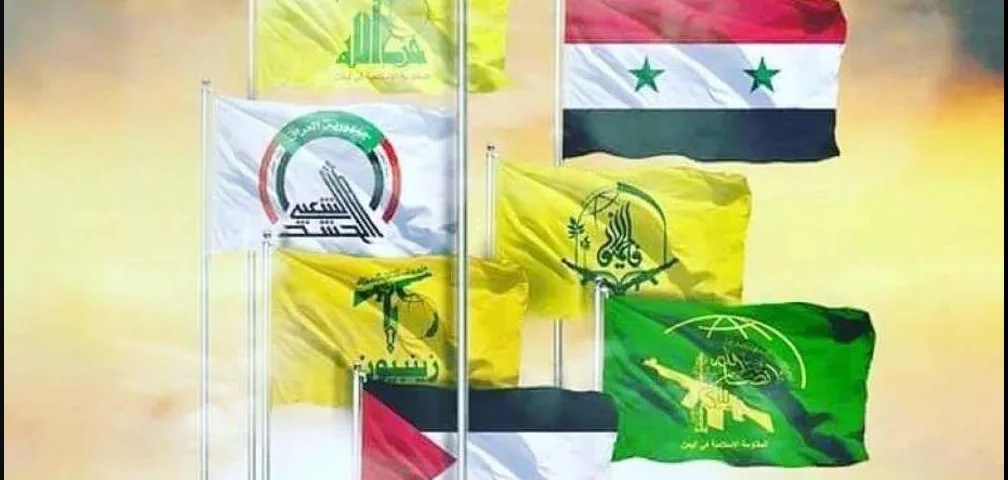by Richie Merino, published on Workers World, September 28, 2024
Syria and the Islamic Resistance in Iraq are demonstrating exceptional solidarity with Lebanon, providing critical aid and defense against Israeli terrorist attacks and indiscriminate bombings, yet their contributions remain largely unrecognized. They are the unseen forces behind Lebanon’s defense and resilience, backing Hezbollah, the country’s militant resistance organization.
Syria has bolstered its defensive and humanitarian efforts, while the Iraqi resistance has intensified its offensive operations. They, alongside Iran and Yemen, are united in their material support for Lebanon and Palestine.
Syria has significantly increased its defensive measures and humanitarian aid to Lebanon. Syrian President Bashar al-Assad has prioritized assisting Lebanese civilians fleeing Israeli aggression. The government has mobilized resources and formed a new cabinet under Prime Minister Mohammad Ghazi al-Jalali to ensure immediate support for Lebanon.
Assad’s strategic mobilization for defense and humanitarian aid
Addressing the newly formed cabinet, Assad instructed the ministers to “stand by our friends in Lebanon in all fields and in all sectors, without exception and hesitation. With the first hours of your work, the main focus of your work must be, during these hours and days, before all other priorities, how can we stand by our friends in Lebanon.” (tinyurl.com/3re8wdc3)
Syrian security officials have facilitated the safe passage of over 500 refugees from Lebanon, underscoring a commitment to protecting Lebanese civilians and preventing a new displacement crisis.
In addition to humanitarian aid, Syria is providing free health care to Lebanese refugees. The Syrian Ministry of Health has instructed hospitals in major regions to offer free emergency and diagnostic services. The Syrian Arab Red Crescent is also distributing essential supplies at border points, ensuring safe transit for displaced individuals.
Syria’s military efforts are equally robust. Syrian air defenses have actively intercepted Israeli missiles targeting the port city of Tartous in Western Syria, demonstrating a strong defense capability. The country is also supplying Hezbollah with missile technology and materials, maintaining a critical supply chain through secure tunnel routes.
Historically, Syria’s alliance with Hezbollah has been reciprocal. Hezbollah’s intervention in Syria was essential in fighting the CIA-funded and armed “Free Syrian Army,” tasked with overthrowing Assad. Throughout the 2010s, Hezbollah also combated U.S. and Israeli-backed terrorist entities like Al-Qaeda and ISIS in Syria.
Notably, Hezbollah commander Mustafa Badreddine played a significant role in protecting Christian villages in Syria from U.S.-backed terrorist proxies, a testament to the resistance group’s broader commitment to defending the sovereignty and territorial integrity of its allies.
Iraq: Drone strikes and aid defend Palestine and Lebanon
Iraq has taken a proactive offensive role, executing drone strikes on strategic targets. The Islamic Resistance in Iraq has targeted Israeli Occupation bases in the Jordan Valley, including in occupied Naqab, the occupied Golan Heights, and occupied Umm al-Rashrash (Eilat), showing a commitment to destroying enemy strongholds at an increasing pace. These operations are part of a broader strategy by the Axis of Resistance to defend Palestine and Lebanon, responding to the massacres committed by Israel against civilians.
Following a directive from Grand Ayatollah Sayyid Ali al-Sistani, Iraq has also initiated humanitarian support, dispatching an aid convoy to Lebanon. This multifaceted approach underscores Iraq’s dedication to both executing military operations and providing humanitarian assistance.
Axis of Resistance’s strategic unity against Zionist division

Actions taken by Iran, Iraq, Lebanon, Syria and Yemen exemplify their steadfast support for Gaza. Their unified resistance against Zionist aggression highlights the “unity of the fields” concept by the Axis of Resistance, which emphasizes that unity is essential to defeating Zionism. The U.S. and the Zionists aim to create divisions in the region based on ethnic and sectarian lines, but the Axis of Resistance forces understand that their diversity and unity is their source of strength, bringing them closer to liberating Palestine and the world from Zionism.
Hezbollah is making immense sacrifices and bearing significant costs to stand with Palestinians. Over 600 Lebanese were massacred in a single day. Hezbollah has pledged to continue its missile strikes with increased range and precision until a ceasefire is achieved in Gaza. While U.S./Israeli diplomacy aims to stop the war in Lebanon alone, Hezbollah Secretary-General Hassan Nasrallah’s stance is clear: A ceasefire must occur on all fronts or not at all.
Israel’s terrorist attacks and indiscriminate “shock and awe” bombing campaigns targeting civilians will not achieve its goals. The conflict should be viewed through the lens of attrition warfare, where the resistance axis employs sustained resistance and precision strikes to minimize civilian casualties and avoid all-out war. This long-term strategy gradually escalates the conflict to deter Israel, maintaining composure despite the Zionist state’s provocations and hardships for the targeted peoples.
The forces in the resistance axis believe time is on their side; they are aiming to win the war, not just individual battles. By focusing on psychological warfare, they exploit the Western occupiers’ inability to endure suboptimal conditions, knowing that disrupting perceived safety for Israelis will cause them to flee, while the indigenous Palestinians remain steadfast on their lands.
Richie Merino is a schoolteacher in New York City. He leads the Bronx Antiwar Coalition and is a member of the UNAC AC.
